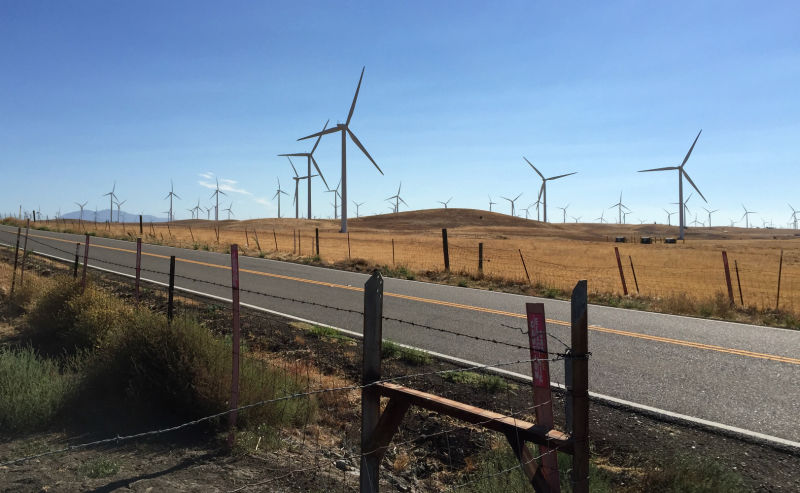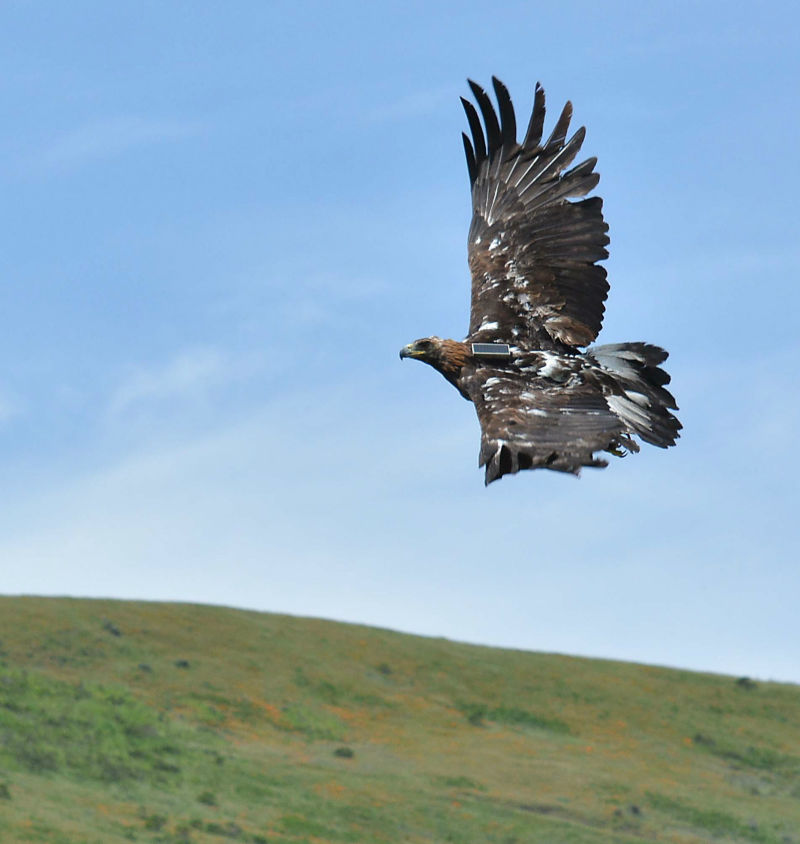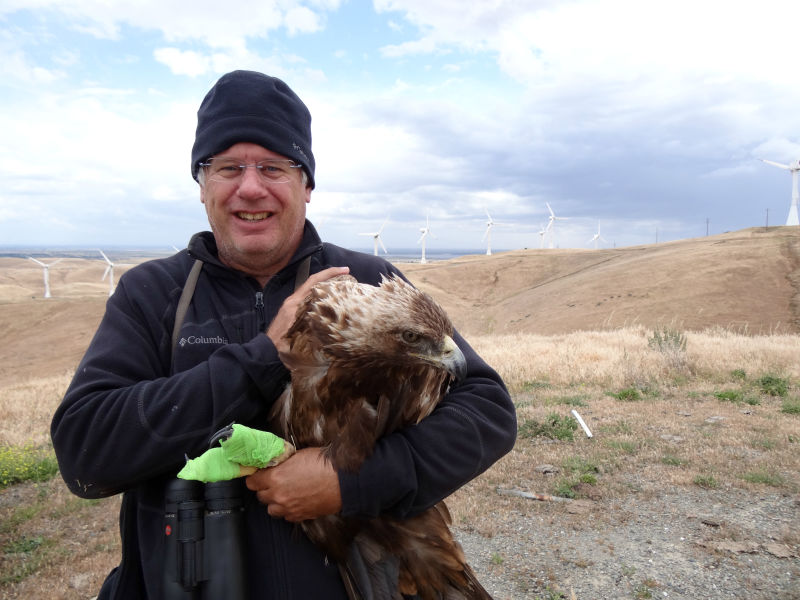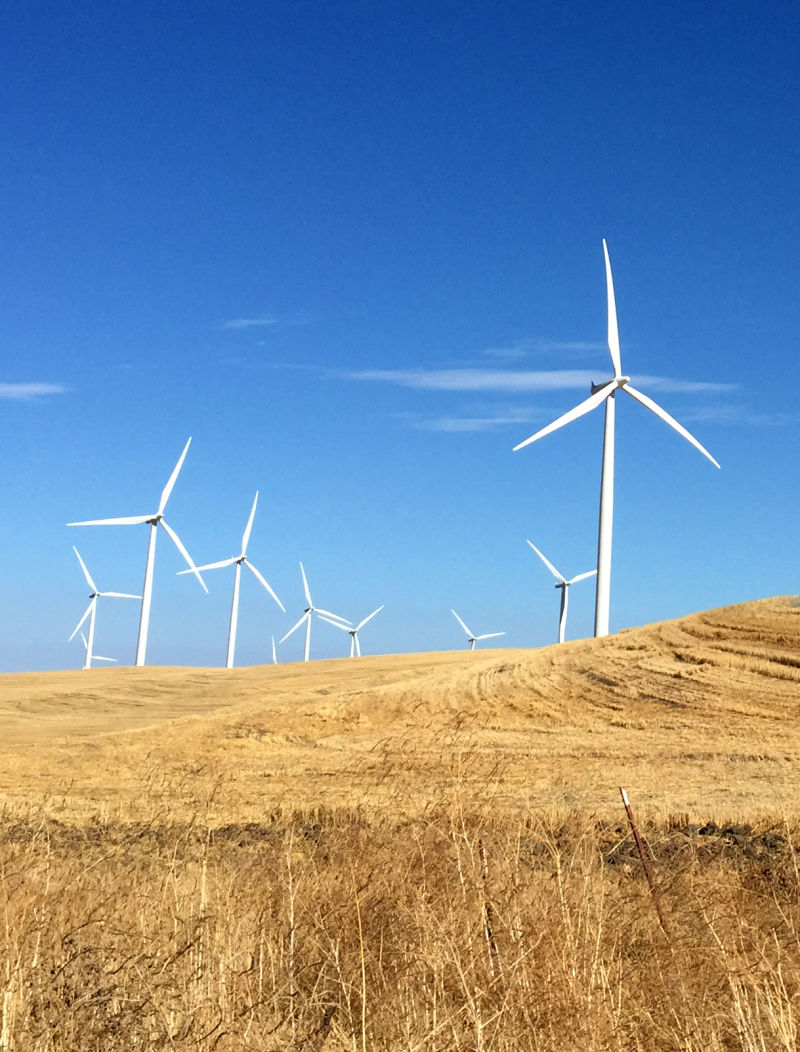Listen to the story:
Big Challenge as California Ramps Up Wind Power: Golden Eagles

Big Challenge as California Ramps Up Wind Power: Golden Eagles
California’s history with wind power goes back decades — as do its troubles with turbines killing birds, including federally protected golden eagles.
With state officials now planning to ramp up renewable energy, an uneasy tension exists between protecting wildlife, and fighting climate change.
Ecologist Shawn Smallwood has found mangled eagles several times in wind farms like those at Altamont Pass, near Livermore. The place has a reputation for turbines killing birds. Alameda County estimates 35 golden eagles were killed there in 2013.
Researching this problem is complicated partly by scavengers, such as ravens, snatching up carcasses before Smallwood can tally them. Coyotes, foxes and badgers converge on the wind farm and search the grounds in a pattern, he says, just like a scientist would.
“At nighttime, as soon as it gets dark, striped skunks run to the wind turbines. Literally run,” says Smallwood. “They also go to the turbines that kill the most animals, so they’re familiar with where they can find food. They usually go to the downwind side of the turbines, again where the bats and birds are most likely to fall after they get hit by a wind turbine.”
The history of wind power is littered with attempts to make turbines safer for birds and bats. It’s not easy. Golden eagles fix their eyesight on prey on the ground and don’t necessarily see what they’re flying into. Smallwood once advocated shutting turbines off over winter, but says on an overcast day, birds can still fly right into blades that aren’t even turning.

At the Altamont Pass Wind Farm, a process is underway right now called “repowering.” This means removing hundreds of older, less efficient turbines. A single massive, new turbine can take the place of 20 or 30 of the older models. This also affords an opportunity to get turbines out of particularly lethal spots altogether.
Even so, the tip of a huge blade can slice through the air at speeds like a racecar.
A few years ago, before the repowering process started, Smallwood estimates 60 golden eagles were killed each year at Altamont.
Permit to Kill
While not listed as endangered, golden eagles are protected under the federal Migratory Bird Treaty Act and the Bald and Golden Eagle Protection Act. Killing them is illegal. But, with the exception of a couple wind companies recently fined in Wyoming, the federal government has rarely enforced such laws.
Scott Flaherty, a spokesman for the U.S. Fish and Wildlife Service, says the agency wants to work alongside wind companies — not punish them.
“While prosecutions are great and make for great headlines, they don’t always do the best thing for eagles,” he says.
Since 2009, wind companies have been able to apply for a “take permit,” essentially, permission to kill a small number of golden eagles. Such applications are thick, highly technical and take a long time to write. Only one permit has been issued since the program was introduced — for a wind farm in Solano County. Seven other wind farms have applications in the pipeline.

By getting wind companies in the door to discuss permits, Flaherty says the agency can also have a frank discussion about settling up over eagles killed in years past.
“One thing about eagle permits is that they don’t allow for past take,” he says. “They don’t really forgive past take.”
In an agreement with U.S. Fish and Wildlife, one company recently paid $10,000 and will spend hundreds of thousands more on research to help eagles.
The permits last five years. Last month, a federal judge kicked a new 30-year version back to Fish and Wildlife officials for more work.
Hardly a Free Pass
Governor Jerry Brown’s administration has set an ambitious goal: By 2030, Brown wants half of California’s power to come from renewable sources.
Nancy Rader, executive director for the California Wind Energy Association, says the industry is aiming to more than double wind energy capacity by 2030; hundreds of new turbines have to go somewhere.

Far from getting an easy pass from regulators, Rader points to proposed restrictions from the Bureau of Land Management, as well as local governments in places like Los Angeles County.
“We’re seeing land-use plans coming out from both the federal government and county governments that actually prohibit the development of wind energy across large areas of California,” Rader says.
Energy supply is about trade-offs, says Ryan Wiser, a senior scientist at Lawrence Berkeley National Laboratory.
“There’s really no free lunch here,” he says, and refers to a report out this year from the federal Department of Energy.
The report examines a future in which wind energy scales up dramatically in coming decades. It concludes that replacing fossil fuels with wind will save hundreds of billions of dollars in “avoided global climate damages.”
However, Wiser points out, the report didn’t attempt to pin down the economic value of the loss of wildlife – such as eagles.
KQED Science coordinating television producer Gabriela Quiros contributed to this story.
